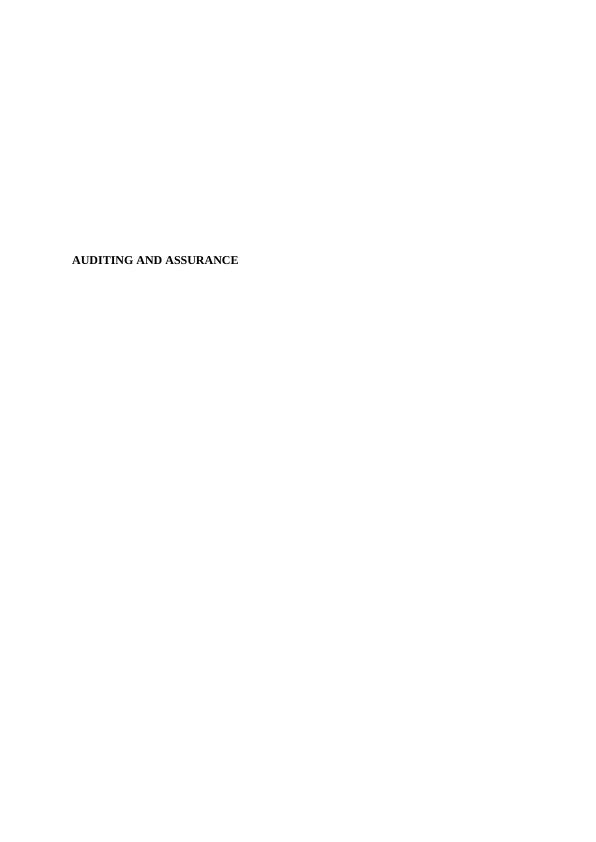HI6026 - Audit, Assurance and Compliance - Case Study
10 Pages2515 Words43 Views
Holmes Institute Sydney
Audit, Assurance and Compliance (HI6026)
Added on 2020-02-24
About This Document
The audit assurance and compliance are discussed in the following report. "Applying the analytical method of reporting financial information of DIP" and "Description of outcomes influencing the audit decision" are two concepts that have been discussed in this assignment.
HI6026 - Audit, Assurance and Compliance - Case Study
Holmes Institute Sydney
Audit, Assurance and Compliance (HI6026)
Added on 2020-02-24
ShareRelated Documents
End of preview
Want to access all the pages? Upload your documents or become a member.
Assignment | Audit, Assurance and Compliance (HI6026)
|10
|2449
|39
HI6026 Audit, Assurance and Compliance- Report
|8
|2103
|37
HI6026: Audit, Assurance and Compliance | Assignment
|11
|2377
|41
Audit - Double Ink Printers Limited | Financial Reports
|8
|1477
|54
Report on Auditing and Assurance - HI6026
|13
|2135
|142
HI6026 - Audit, Assurance and Compliance, Preliminary Analytical
|8
|2059
|214



